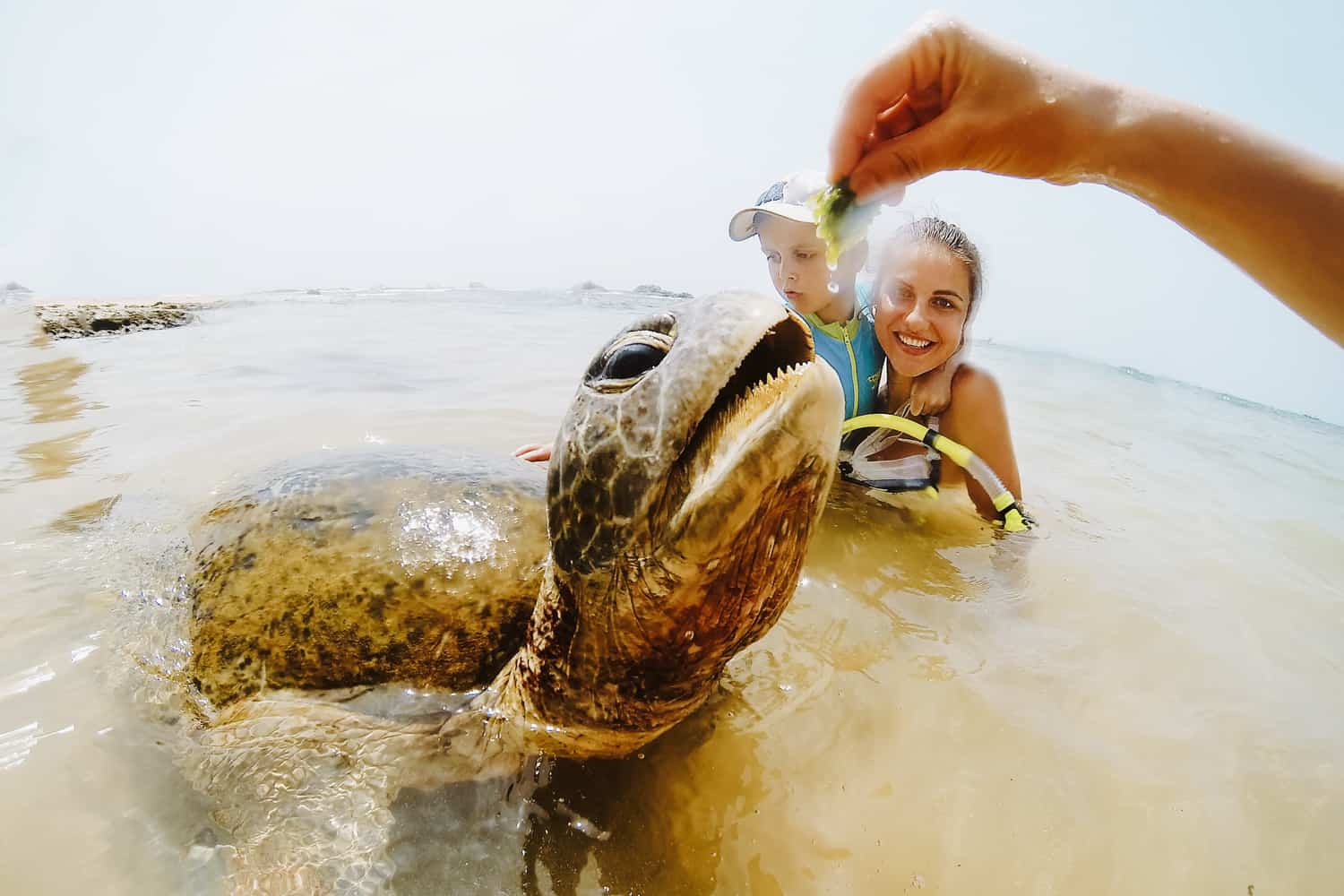What comes to mind when you think about Sri Lanka?
Like most travellers, you would think about the island’s sandy beaches, national parks, elephants and leopards, and so on. Turtle watching would probably be the last thing on your mind.
If so, you would not be the only one. Many are unaware that turtle watching is an excursion here.
Though it might not be on everyone’s to-do list at first, I can confidently say that this excursion is enjoyed by travellers of all ages—especially children. Many of our guests are families travelling with young children, hence turtle visits are often highlights on our tours.
So, for this week’s article, the spotlight is on where to see turtles in Sri Lanka.
Without any further ado, let’s get started!
Best place to see turtles in Sri Lanka
Of the seven species of sea turtles in the world, there are five types of turtles that you can see in Sri Lanka.
While the Olive Ridley Turtle and the Green Turtle are commonly spotted on the island’s shores, the Hawksbill Turtle, the Loggerhead Turtle, and the Leatherback Turtle are a different story.
What you see depends on where you go, and choosing the excursions below will increase your chances of seeing some, if not all, of the sea turtle species known to Sri Lanka.
1. Turtle Beach in Hikkaduwa
With its powdery sands and crystalline waters, the coastal town of Hikkaduwa is a popular tourist destination, and we are spotlighting its Turtle Beach as one of the best places to see turtles in Sri Lanka.
Maybe your knowledge about sea turtles comes from what you have read, or maybe it comes from a visit to the aquarium. That being said, have you ever pictured yourself feeding turtles on the beach? Probably not.
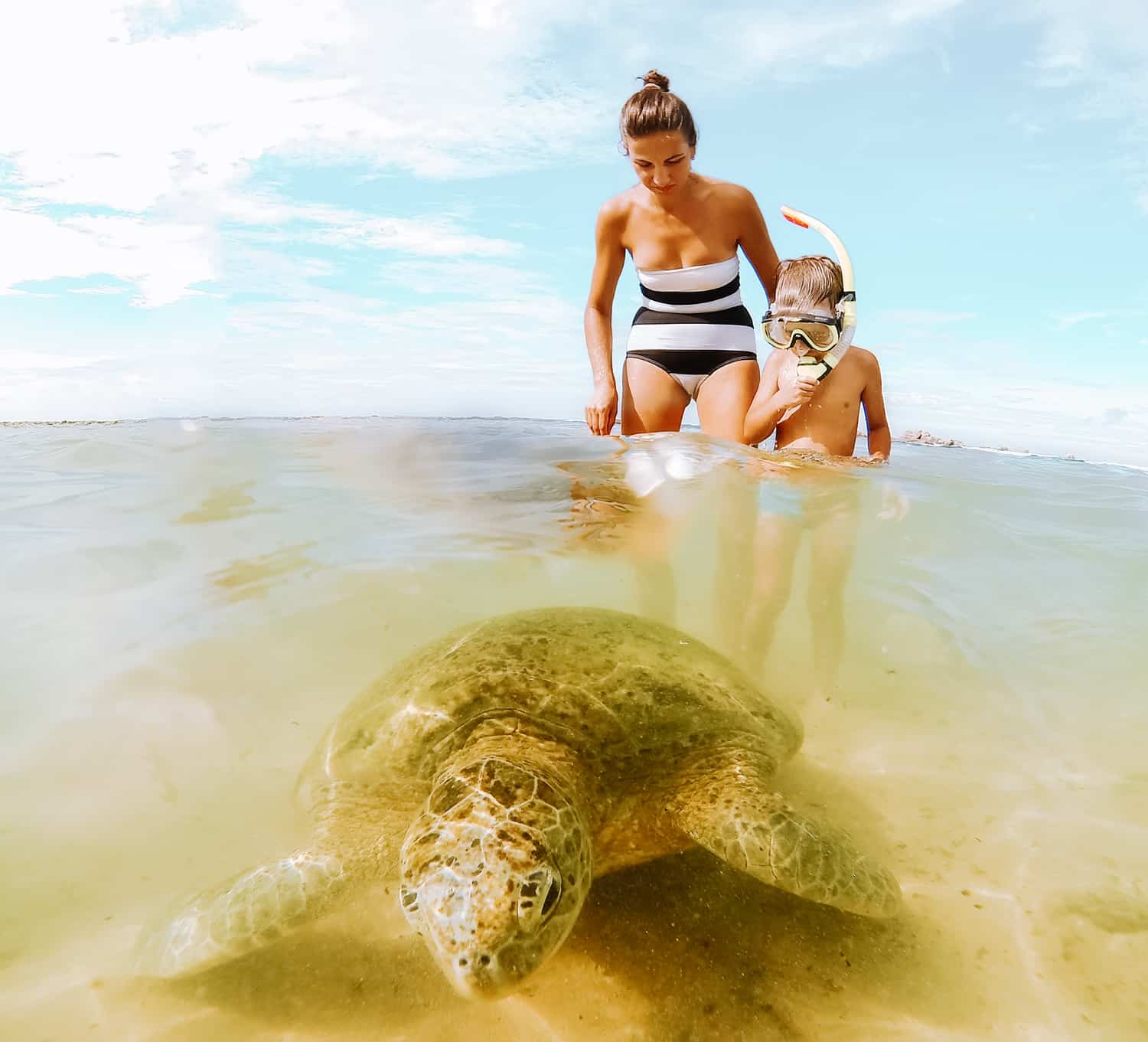
As bizarre as it sounds, Turtle Beach offers you the once-in-a-lifetime opportunity to pick up some kelp or seaweed that has washed ashore and to hold it out for a lucky turtle to snatch out of your hands. It is hardly a surprise that children enjoy this surreal experience the most, as it lets them become waiters at a diner open exclusively for turtles.
A trip to Turtle Beach is best left for days when the sun is out. Morning hours are better than the late afternoons, as there will be less people lining up to feed these beautiful creatures.
The sea turtles in Turtle Beach come ashore on a daily basis. So, feel free to stop by anytime!
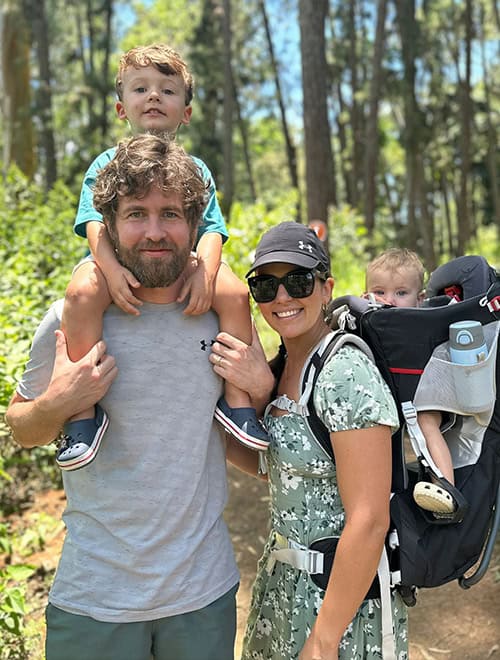
Would you like a Sri Lanka trip like Beatriz's?
We had the pleasure of assisting Beatriz's family on their two-week holiday in Sri Lanka, and they absolutely loved it. Would you also like a hassle-free family holiday? Please drop us a message specifying your requirements, and we will get back to you with a tailor-made Sri Lanka tour package within 24 hours.

Would you like a Sri Lanka trip like Beatriz's?
We had the pleasure of assisting Beatriz's family on their two-week holiday in Sri Lanka, and they absolutely loved it. Would you also like a hassle-free family holiday? Please drop us a message specifying your requirements, and we will get back to you with a tailor-made Sri Lanka tour package within 24 hours.
2. Rekawa Beach
Where its popularity is concerned, Rekawa is a far cry from Hikkaduwa. Even so, this fishing village has its own charms, and its sandy shores are best known as a nesting ground for female turtles.
Curiously enough, no matter where these female turtles are, they will treat the beach they were birthed at as their nesting ground. This bizarre yet fantastic process of natal homing is a gentle reminder that the adult females you see at Rekawa Beach were once tiny hatchlings hidden under the sand around 20 to 30 years ago.
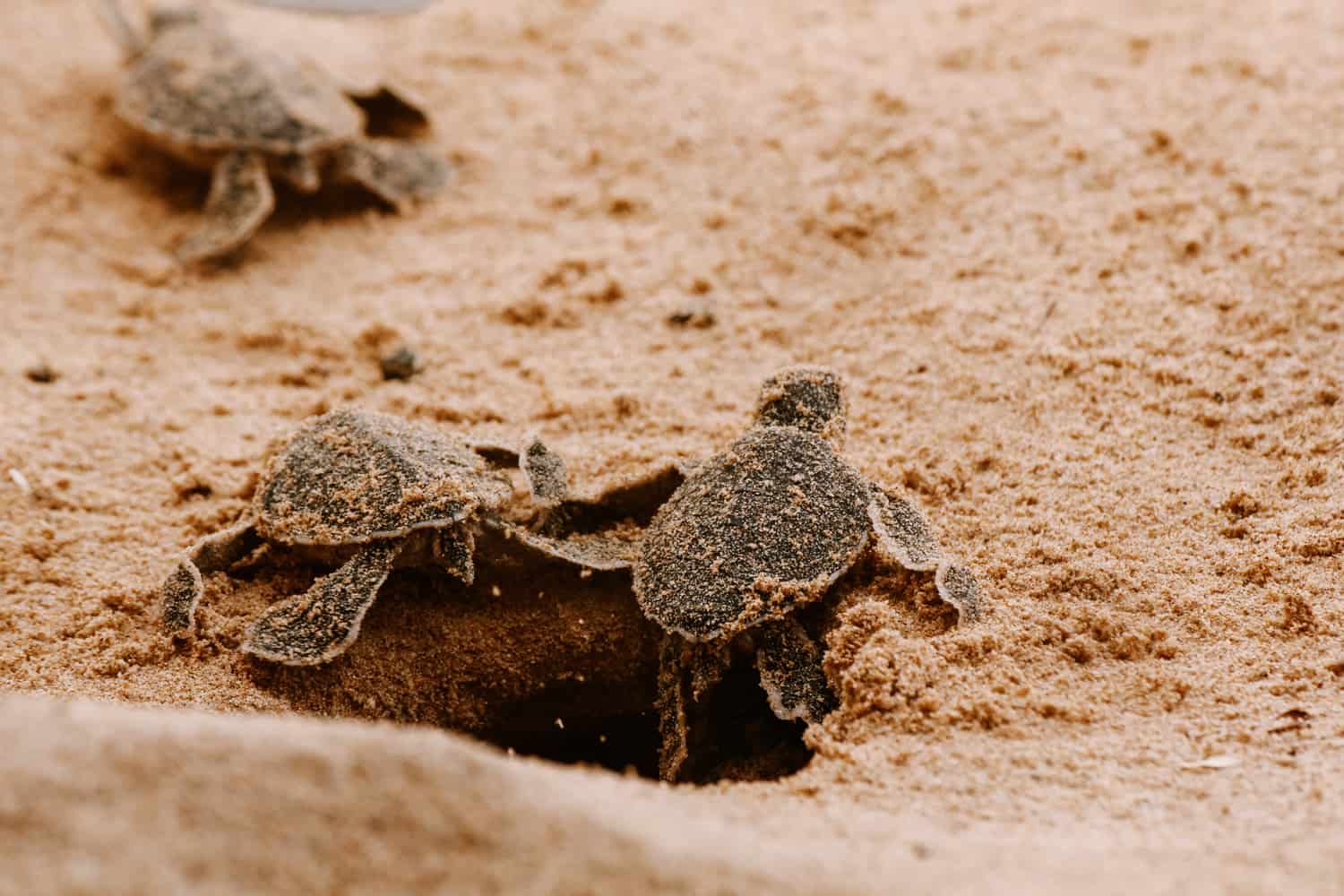
The highlight of this beach is its famed turtle watch evenings, which give travellers an opportunity to watch these reptiles lay their eggs. It is an excursion conducted by the Rekawa Turtle Watch—a conservation project which protects turtle nests from poachers and predators.
Just so you know what to expect, let me explain how the typical turtle watch evening goes.
For starters, making the trip with a travel agency makes things easier, as they will take care of the logistics. After a female turtle has been spotted by a nest protector, your guide will take you to the Visitor Centre at Rekawa Turtle Watch. If you are travelling on your own, it is best that you arrive at the centre by 8.30pm.
You will then be asked to pay a small entrance fee. Keep in mind that if no turtles are spotted during your watch, you may ask for a refund.
At the beach, you will be shown one female turtle making her nest. Since their flippers are not exactly the best shovel for digging through the sand, you may have to watch and wait in silence for a long time. But if she is satisfied with her nest, she will lay 50 to 150 eggs inside it. This will kick-start the slow process of covering it up. Once she has made sure that her eggs are secured under a thick layer of sand, she will return to the ocean.
As you may have guessed, turtle watch evenings are not for those who are impatient. It may be as late as 1.00 am when these fascinating creatures make their way back home. If this is something you would like to see, you must be prepared to wait.
If a turtle watch evening is on your to-do list, I would recommend visiting during nesting season, which is from April to July. You are guaranteed to see five or more turtles if you do.
The second-best period to observe turtles laying eggs in Rekawa is from October to January. (According to the Turtle Watch Rekawa, the chances of seeing turtles during this period is lower compared to the period April to July.)
3. Pigeon Island
As I have mentioned before, not everyone enjoys lying in wait to see a nesting turtle. Those who crave adventure may be on the lookout for some alternatives when researching the topic, “where to see turtles in Sri Lanka”—and that is where Pigeon Island comes in.
Touted as one of the most mesmerizing snorkeling spots in Sri Lanka, Pigeon Island is a marine national park that houses hundreds of endangered and near threatened species. But that is not all!
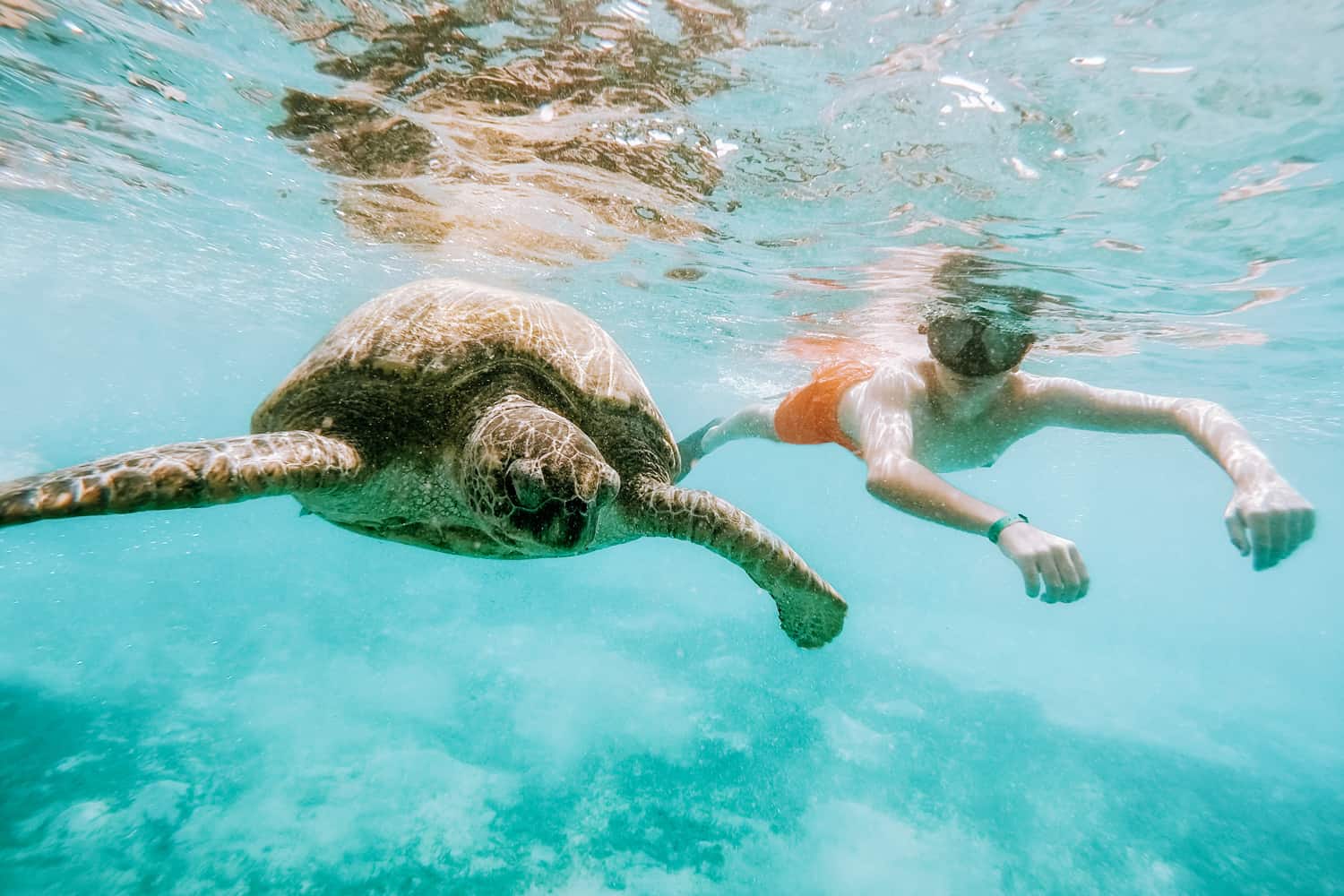
Since it is teeming with coral gardens and aquatic life, you will be able to snorkel past shoals of fish, blacktip reef sharks, and sea turtles too. In fact, there is a strong chance that you will see the Hawksbill Turtle, the Olive Ridley Turtle and the Green Turtle here. So, get your snorkel, mask and fins ready for an unforgettable underwater adventure!
As Pigeon Island is located offshore, you will have to hop on a speedboat from Nilaveli Beach to get there. It is a 20-minute journey, and once you have paid your entrance fee you will find that many of the boatmen onshore are willing to take you there for a small price.
Be sure to decide on a suitable pickup time before your speedboat leaves.
Visit Pigeon Island between May and October during their snorkeling season. The best time of day to visit Pigeon Island is between 8.00 am and 10.00 am, as there will be fewer people and the sea will be pleasingly smooth during these hours.
4. Visiting a turtle hatchery
Visiting a turtle hatchery might not sound as exciting as snorkelling with turtles underwater, but it is still a favourite among many of the tourists that visit Sri Lanka. If you time your visit right, you will get to combine an educational tour with releasing hatchlings into the ocean.
First, let me explain how a turtle hatchery works.
Both endangered and with low rates of survival in the wild, sea turtles face an ever-present threat of becoming extinct. To combat this, the workers in turtle hatcheries are tasked with gathering and relocating the eggs laid by female sea turtles to a safer environment away from predators and poachers. The hatchlings are then kept in large tanks until they are old enough to survive in the wild.
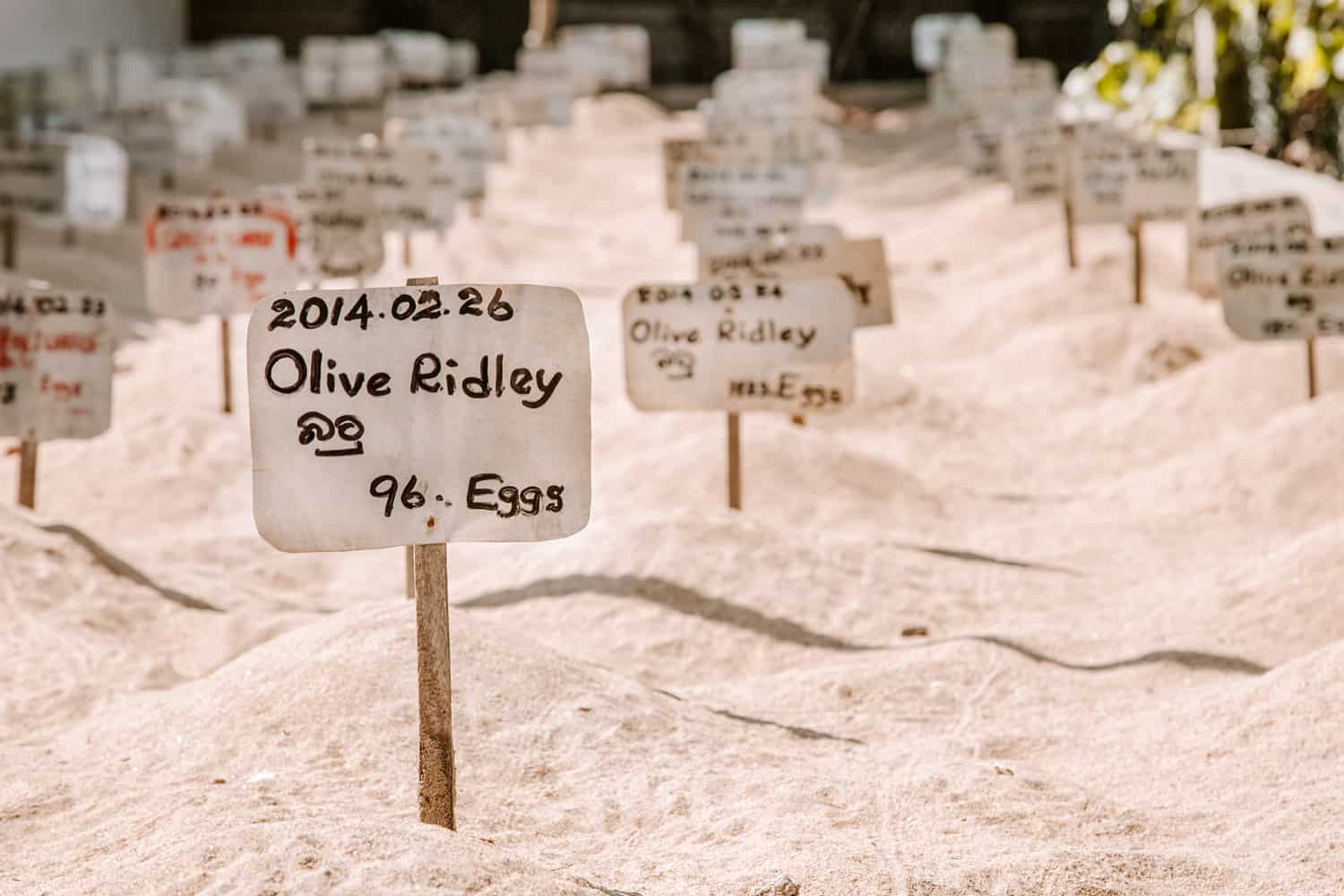
The educational tours offered at these hatcheries are the perfect opportunity to learn more about these amazing creatures. You are also likely to see all five of the endangered marine turtle species known to Sri Lanka at the hatchery.
One highlight of visiting a turtle hatchery is their practice of releasing hatchlings into the wild. If you show up by 6.00pm, you will get to see that magical moment when the baby turtles make their way home.
You will even get to release one of these hatchlings yourself. I can assure you that this is a fun activity to look forward to!
Sri Lanka’s most popular turtle hatcheries are in Kosgoda. You can also find many of them along the coastline in Hikkaduwa and Galle. Even if you did not stay in any of these places during your holiday in Sri Lanka, you can still visit a turtle hatchery as a day tour if you are spending some time in a southern coastal region.
Keep in mind that there is a small entrance fee to be paid before you visit a turtle hatchery. Since these hatcheries are always open to the public, you can make this trip during any time of the year.
Best time to see turtles in Sri Lanka
Now that you know where you should go, you may wonder what the best time to see turtles in Sri Lanka is. This depends entirely upon which destination or sites that you visit to see the turtles.
An excursion to see turtles in Rekawa, Sri Lanka is best left for the period April to July, but a trip to see turtles in Pigeon Island is ideal during the period May to October. No matter the time you visit, feeding turtles in Turtle Beach and journeying to a turtle hatchery are excursions that you can enjoy.
Be sure to choose your excursion wisely!
Tips to enjoy turtle watching responsibly
In order to make your turtle watching experience in Sri Lanka a responsible one, please make sure to follow below guidelines when engaging with turtles.
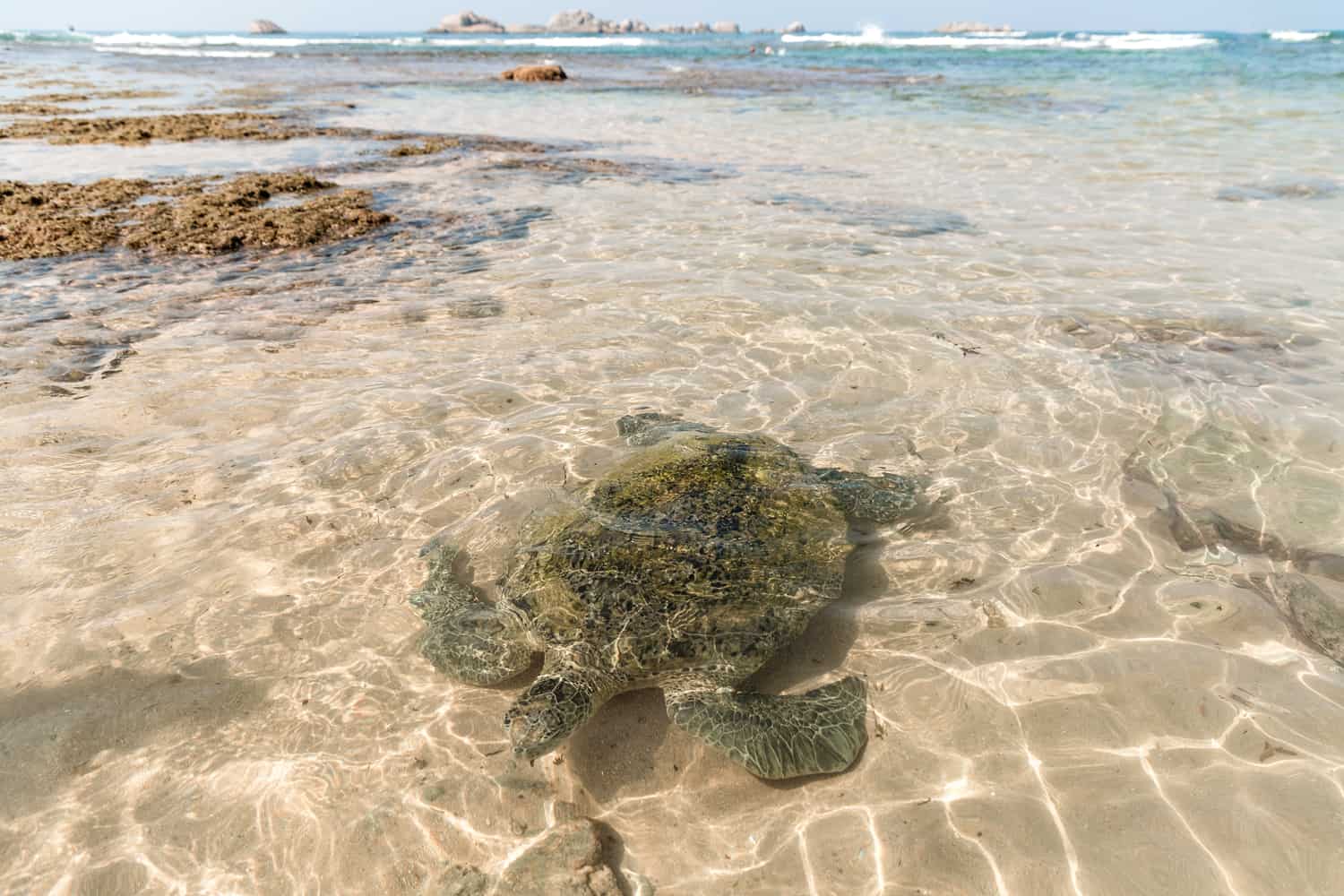
1. Do not touch them
When you are caught up in the moment, it can be very difficult to resist the urge to pet a sea turtle. However, you might inadvertently expose them to harmful chemicals when you touch them wearing sunscreen.
Whether you are snorkelling on Pigeon Island or feeding some expectant turtles on Turtle Beach, be sure to maintain a reasonable distance and do not touch them.
Note - If you are not sure what is the appropriate attire for beaches in Sri Lanka, please refer to our article, "dress code in Sri Lanka".
2. Avoid flashlights and flash photography
Sea turtles are sensitive to light. As they prefer to nest in the dark, bright lights might prevent the females from coming ashore.
To minimize the disturbance to these turtles at night, conservation workers at Rekawa Turtle Watch use flashlights with a special red filter. So, even without flash photography and bright lights, you will still be able to observe these fascinating creatures in the wild. We request you to not to use any other flashlights or torches during these visits.
3. Refrain from littering
Sea turtles, like other aquatic life, may feed on plastic waste that is left on the beach. This poses a serious threat to their lifespans and their survival in the wild.
Unfortunately, it does not stop with plastic waste. Even leftover meals on the beach can attract predators in the vicinity, who will dig up the nests and eat the eggs.
Wherever you go, be sure to pick up any waste you see and dispose of it properly. By doing so, you will be aiding our efforts to protect these endangered animals.
4. Follow your guide
A trained professional will know the dos and don'ts of turtle watching. Be sure to follow what your guide says.
Summary
From feeding turtles to releasing hatchlings back into the ocean, now you know where to see turtles in Sri Lanka. I hope you will enjoy your turtle watching experience in Sri Lanka to the fullest following the guidance in this article.
Feel free to drop a message or leave a comment if you have any unanswered questions. I am more than happy to answer any questions that you might have.
If you enjoyed this article, be sure to read some more. Perhaps our article, "wildlife in Sri Lanka" next?
Happy Travels!

